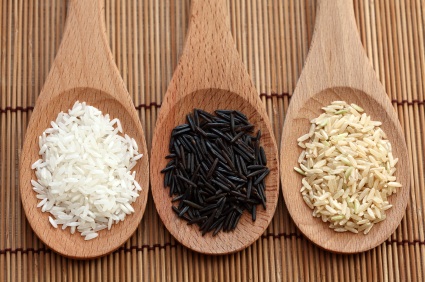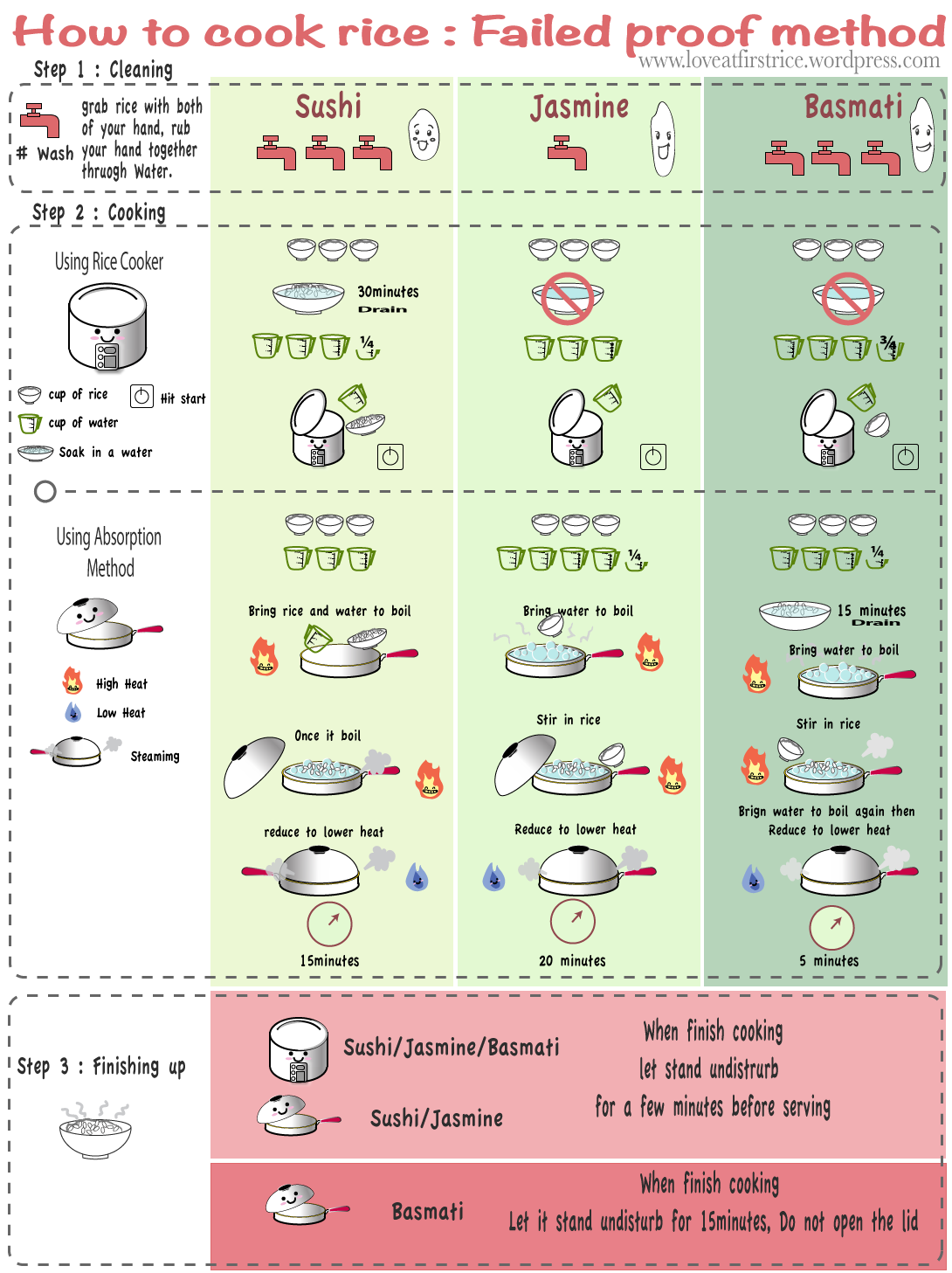Guide to Rice
By Sharon Ng

The other day we had one of those "yuck" dinners. Usually we buy Jasmine or Basmati Rice and this time we just picked up some store brand long grain white rice, because we couldn't get to the Asian Market where we get the HUGE bags of rice. Keep in mind that there is nothing wrong with store brand, or long grain rice, but we are a big rice eating family, and are picky. Different types of rice respond differently to cooking methods, which we will get into. This time, my store brand, long grain was not what we were used to when made in our rice cooker. (When I do chicken and rice casserole in the oven, this rice is awesome, so I will save it for that.)
Did you know?
Rice is the seed of the monocot plants Oryza sativa (Asian rice) or Oryza glaberrima (African rice). As a cereal grain, it is the most widely consumed staple food for a large part of the world's human population, especially in Asia and the West Indies. It is the grain with the second-highest worldwide production, after maize (corn).
There are three main sizes of rice, which is an easy way to classify the types.
Long grain is a classification for rice that is at least three times as long as it is wide. Think of long-grain white rice, like Carolina, or long-grain brown rice, like Uncle Ben's. Basmati and Jasmine, popular in Indian and Thai cuisine, are also long-grain varieties.
Medium grain rice is less than three times as long as it is wide. Risotto rices, like Arborio, Carnaroli, and Vialone Nano are considered medium grain, but are sometimes lumped together with short grain.
Short grain rice is less than twice as long as it is wide. Sushi rice is a good example of short-grain rice. (Though it can also be argued that some sushi rice, such as calrose and nigri are actually medium grain).
Best ways to cook: Long grain typically cooks best in boiling water, the water is typically doubled to the amount of rice being cooked. Always read package instructions for different types of rice for best results.
We typically cook rice in a rice cooker, which really does all the work for us. We find best results when we wash the rice first. To do this in our rice cooker, we add the desired amount of rice to the cooker bowl then add water to cover. We swish the rice and water around in the cooker bowl, and rub it around a little, then strain out the water, by just using our hand to prevent rice from falling out as it is dumped. Then we add the necessary water to cook.
Some Asian varieties may need different cooking methods, such as Japanese (Sushi) rice and sticky rice. Usually these varieties require steaming. I have cooked sushi rice in my rice cooker however when making sushi and it has turned out just fine.
Other tips about rice:
- Instant Rice is already half cooked, then dehydrated, which cuts cooking times by half.
- Parboiled Rice has been partially boiled during milling and therefore has extra nutritional value in it.
- Enriched rice has had extra vitamins and nutrients added to boost its healthfulness. (Avoid rinsing this rice, to avoid washing away all the extra good stuff).
- Basmati rice is fragrant and the kernels do not stick together. It takes longer than white rice, but can be presoaked to speed cooking time. This rice is used in Indian cooking and can be purchased in bulk in Indian shops for the best deal.
- Jasmine rice has a fragrant nutty smell, its often used in Thai cooking and I think it might be my personal favorite.
- Wild rice is actually the seed of a grass, it also can take up to 50 minutes to cook! The result is a delicious, nutty flavor.
- Brown rice is nutritionally better for you because it has the hull and bran on it. Brown rice requires twice the cooking time as white rice.
- Short grain rices lend themselves to a creamy consistency after being cooked, perfect for rice pudding and risotto.
- A tip for stir frying with rice, or making fried rice. Chill your cooked rice before throwing it in the pan, it will get a better, more separated consistency.
This really cute graphic might help you in your rice cooking endeavors. I know there are some issues with the language, but it is very cute, and I think you can get the gist of it!

Sources:
Join the Cook'n Club!
An unbeatable value with exclusive benefits for members only.
Get a newsletter like this each week when you join the Cook'n Club.


